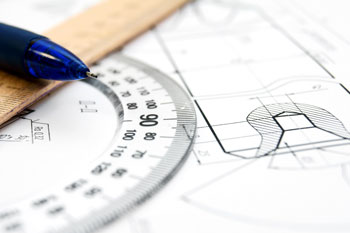How Do Patents Intersect with Copyright?
 ARE PATENTS AND COPYRIGHT MUTUALLY EXCLUSIVE, OR CAN ONE USE BOTH?
ARE PATENTS AND COPYRIGHT MUTUALLY EXCLUSIVE, OR CAN ONE USE BOTH?
As we have already learned, only patents protect ideas from being copied, so long as the patent tests are met. Copyright protects the expression of your idea, not your idea itself. Under copyright law, ideas are intended to be freely shared, so you cannot copyright an idea. You can therefore sometimes use patents and copyright together to protect different aspects of the same innovative output.
The question of whether patents and copyright are mutually exclusive is illustrated in the examples below.

EXAMPLE 1: TECHNICAL DRAWINGS OF PATENTED INVENTIONS
Nina invents a new type of machine for which she obtains a patent. She includes in her patent application engineering drawings of her invention that she drafted herself. Under patent law, Nina can protect the machine (the actual physical invention) and can prevent anyone else from making or selling the machine.
Separately, she would also be able to protect the engineering drawings against copying under copyright law. Because copyright law protects against the reproduction of a work in different dimensions, she might also be able to prevent someone from making the machine based on the engineering drawings as an unauthorized three-dimensional representation of her two-dimensional artistic work.

EXAMPLE 2: PROTECTION FOR COMPUTER SOFTWARE
Max develops a new software program he believes will transform his start-up company into a competitive player in the telecommunications software industry.
Most jurisdictions consider computer programs to be the subject of copyright protection. However, some jurisdictions also recognize software patents in specific cases. Patent and copyright in the same piece of software are therefore not necessarily mutually exclusive.
In countries that allow both forms of protection, Max might consider the level of protection that each offers in determining
his IP strategy.
| Copyright | Patent |
|---|---|
| Copyright only protects against the reproduction of all or a substantial part of Max’s computer code. Someone can independently develop software that performs the same function as the copyrighted software, and that software would not be infringing on Max’s copyright. Similarly, even if the competitor refers to Max’s code in developing their own, if they do not substantially reproduce Max’s code, then Max will have trouble enforcing his copyright. |
Assuming that Max is able to secure patent protection, then his patent will provide a much more robust form of legal protection. Even though it lasts for a shorter duration than copyright, the protection is more all-encompassing in that it prevents someone from producing Max’s invention, regardless of whether the underlying computer code was also reproduced. Patent rights would protect Max against someone independently arriving at the same invention, whereas copyright would not. |